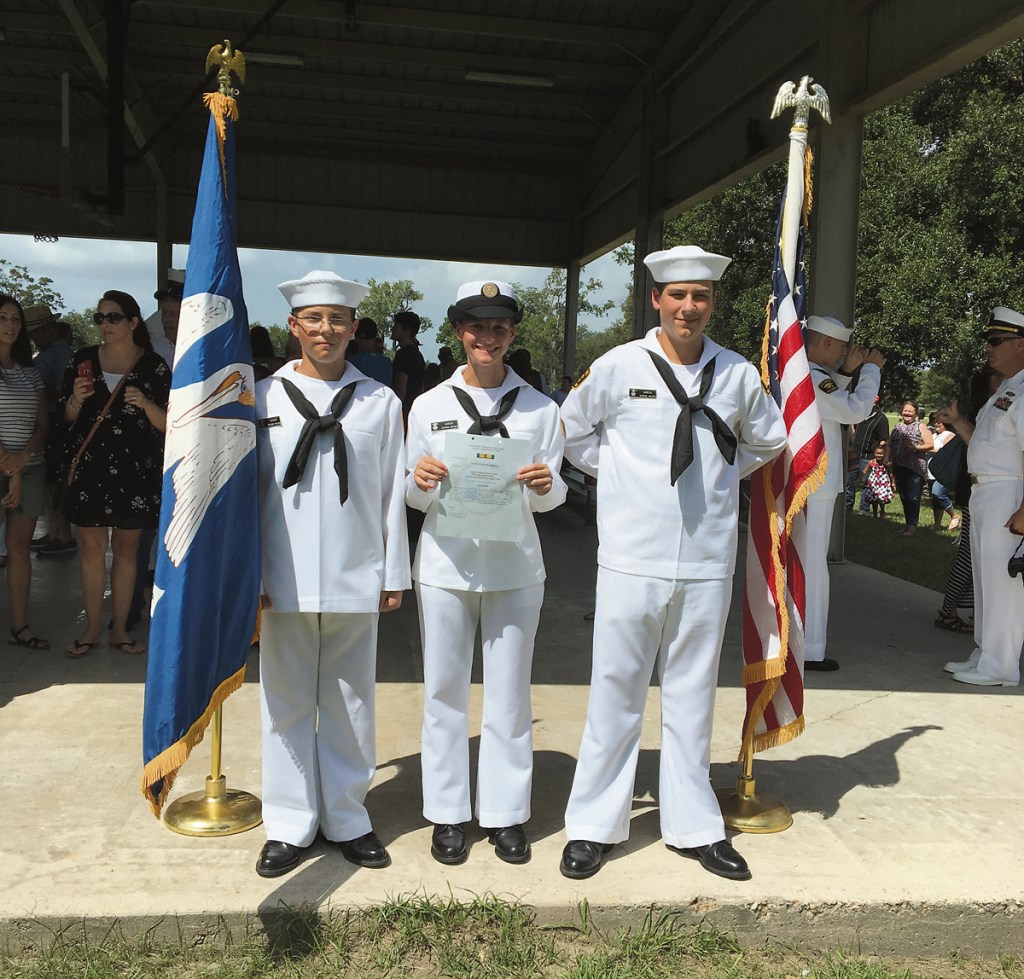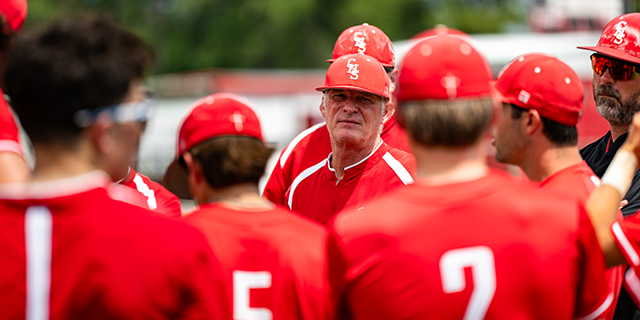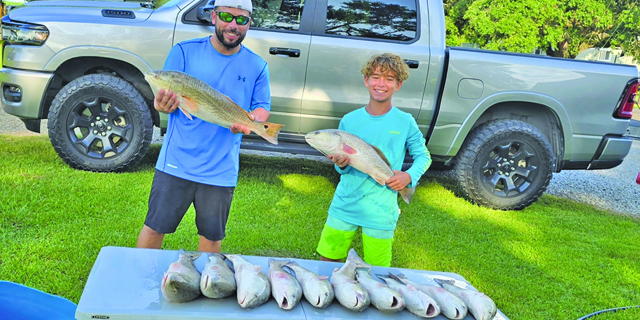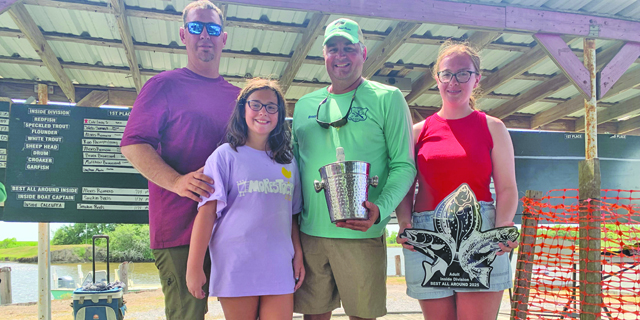Exploring Sea Cadets
Published 5:12 pm Tuesday, July 19, 2016

- Jason, Emily and Jacob Garcia are the first known triplets in the nation to participate in the U.S. Naval Sea Cadet Corps program for young people ages 13 to 17.
Summer camp leads to future opportunities
Trending
Being part of the military in the late 1960s was important to Cuban-born Dr. Jesus Rene Garcia of New Iberia. Patriotism was, and is, important to him and his family. Garcia remembers his grandmother passing her citizenship exam with an excepted answer to a basic question.
“She lived in New York and always dreamed of being naturalized before she died. Back then they asked questions,” Garcia said. “She was asked, who was the first president of the United States? She answered proudly, ‘George Washington Bridge.’ The man asking said, ‘that’s close enough Mrs. Goiricelaya.’ She was 85.”
Four generations later, the children of Kimberly and Jesus Garcia, a retired captain of the U.S. Navy, have taken the plunge into the Naval Sea Cadet Corps program. Not just the younger Garcias — the entire family has made the commitment. Dad is the commander and Mom is the administrative officer of a new NSCC unit, Acadiana Sea Cadets.
The 14-year-old triplets, Jason, Jacob and Emily, were the first nationwide of two multiple birth siblings to attend a boot camp this summer. They recently returned from nine days in Carville and are ready to do whatever is required to advance in the rankings — a future that has the potential, but no commitment, of a career in the military.
Exploring Options
Looking for something for all three to do during the summer, Emily Garcia discovered the NSCC program online. Further investigation by the family of five, and two months later, they made the commitment to restart an area unit of the Sea Cadets that stopped more than three decades ago.
Trending
“At the time they were called the Cajun Sea Cadets,” said Jesus Garcia, “We’re changing it to Acadiana Sea Cadets to be more inclusive.”
The Sea Cadets is an opportunity to acquaint young people with the oceans and maritime professions. The world is covered with 71 percent water, Jesus Garcia said.
“The program will allow youth and parents to do activities together like sailing, scuba diving, water safety or the firing range. It’s like Boy Scouts or Girl Scouts on steroids,” Jesus Garcia said. “The parents can get involved as well as the youth.”
Serious Enlistment
As students of Catholic High School, the Garcia siblings were aware of life’s disciplines and easily understood what was required of them at boot camp. They observed from the first day the regiment and respect that would be required to not only advance but to stay with the program.
“I was afraid they wouldn’t speak to me at graduation,” Kimberly Garcia said. “I knew before they left some of the things they would be facing, like waking up at 4:45 every morning. I wasn’t sure how they’d feel about it. We didn’t even get to give them a proper goodbye.”
“Sea Cadets come under the real Navy and they have a zero tolerance regarding discipline,” Jesus Garcia said. “It is not a program for behavior problems. The cadets have to want to be part of the program, not sent by their parents.”
Jacob and Emily both received ribbons during boot camp as recognition for their unit’s achievements. Jacob’s company ribbon was for the best unit representing 13 recruits collectively. Jason’s unit also excelled but was hindered from top honors when two cadets had to be sent home. One was dismissed for disrespect and the other for a health concern.
“Emily started looking at all the ribbons that are available to wear on their uniforms and that really drives them,” Kimberly Garcia said.
Emily earned Honor Cadet on her own merit and received a certificate for her achievements that included replacing a cadet staff member sent home in the middle of camp. When a new leader was needed, the officers saw potential in their young recruit and Emily was appointed to take the role. Leadership runs in the family.
“One of my jobs as administrative officer is to assign correspondence courses. I help cadets complete their studies and then pass a test. They also have physical tests,” Kimberly Garcia said. “Then they can sign up to go for specific training, even international exchange. There are programs for culinary arts, photography, journalism, music, medical, legal, dentistry, scuba diving, seal training and more.”
All Americans
The Cuban ancestry of the Garcias is not unique. Most of the people living in the United States have ancestors who immigrated to this nation during one generation or another. Then other descendants were either born here or they themselves became naturalized citizens as provided through the laws of the nation.
“We live in the greatest country in the world. We all fly under one flag,” Jesus Garcia said. “We should all say the pledge allegiance to the flag. That is what unites us. I tell these kids, when they put on the uniform that binds them— black, Vietnamese, white, Hispanic — they’re all the same.”
Jesus Garcia said discipline and training are important to young people and also teaching them about patriotism.
“You have to show respect, like the police right now,” Jesus Garcia said, “and you have to earn respect.”
Emily said one of the lieutenants at boot camp told them when they put on the uniform they’re not just wearing uniforms. They are wearing the country’s flag and they have to respect it.
They also learned one of the codes of the military. In harmony, the trio emphatically recited The Sailor’s Creed that was part of the daily drill at boot camp.
“I am a United States Sailor. I will support and defend the Constitution of the United States of America and I will obey the orders of those appointed over me. I represent the fighting spirit of the Navy and all who have gone before me to defend freedom and democracy around the world. I proudly serve my country’s Navy combat team with Honor, Courage and Commitment. I am committed to excellence and the fair treatment of all,” Jason, Jacob and Emily said.
“It’s a surreal sight to see all these young kids, who would otherwise be playing video games, standing at attention and in formation reciting the code,” Kimberly Garcia said.
Boot camp was just the beginning. After boot camp there are advance trainings so the seaman recruits can rank up.
“Before the next recruit training comes around, we’re going to try to become certified to be trainers,” Jacob said.
Future Ranking Up
The Sea Cadet program started in 1958 and was approved by Congress as a civilian league in 1962. In 1974 they allowed girls to join so there is a lot of history, Jesus Garcia said.
For children 11 through 13 the junior program, called the Navy League Cadet Corps, limits activities to daytime programs but provides an introduction to the lifestyle of maritime involvement.
The Naval Sea Cadet Corps program that the Garcia triplets attended is for ages 13 through 17, or completion of high school. Both are sponsored by the Navy League of the United States and supported by both the U.S. Navy and Coast Guard.
The goals of the Cadet program, according to its website, include creating a favorable image of the Navy on the part of American youth. From an early age children can begin to further their understanding of maritime services adhering to a standardized training program designed to develop an interest in seamanship and seagoing skills.
They learn good citizenship, strong moral principles and an understanding for an alcohol-free, drug-free and gang-free lifestyle. Cadets are exposed to the prestige of public service with a variety of career paths through hands-on training, the website said.
After the basic training, they can branch off and concentrate on the area they are interested in, Jesus Garcia said. Approximately 35 percent of youth participating as cadets advance into the military. If they choose to do so, they will go in at a higher rank because of the program.
With a vocation and training, they can advance more quickly because they know what they’re interested in pursuing, Kimberly Garcia said.
Youthful Community
When the unit is fully organized the Garcias hope to be marching in parades, performing service projects, visiting the elderly, whatever takes the cadets into the community.
Garcia said it takes about a year to establish the unit and approximately $2,500 for unit expenses. He has begun seeking sponsorship that includes the physical needs, financial and personnel required to run the program. Jesus and Kimberly Garcia are already meeting with leaders in other units and taking officer training.
“We have not put the word out about this at all except through a few friends,” Jesus Garcia said. “We want to involve the Merchant Marines, police, Coast Guard and the Naval base, EMTs, canine units, the areas are limitless. The extent of the offerings will depend on the acceptance and participation by the community.”
“We didn’t want to put the word out until we knew what to do,” Kimberly Garcia said.
The full Garcia family has been recruited for the Sea Cadet program, but until the Teche Area signs up to the vision, only they will be the beneficiaries.
For more information visit www.SeaCadets.org or call Dr. Garcia at 367-6776 referencing Acadiana Sea Cadets.





